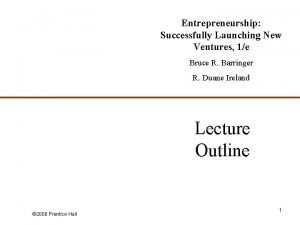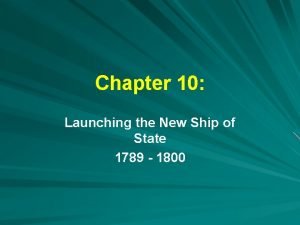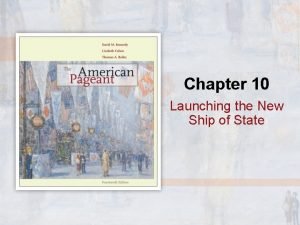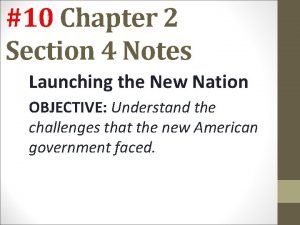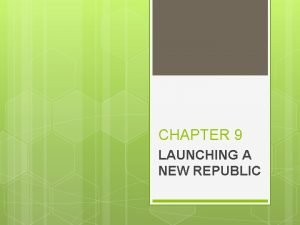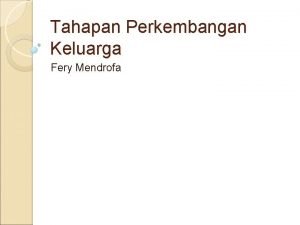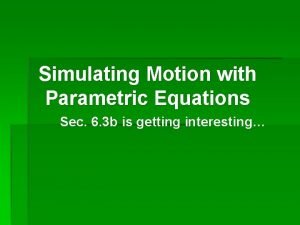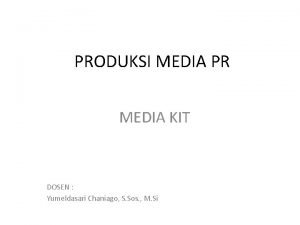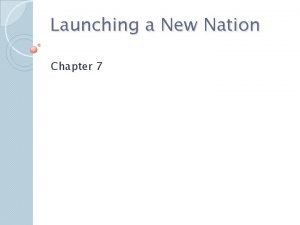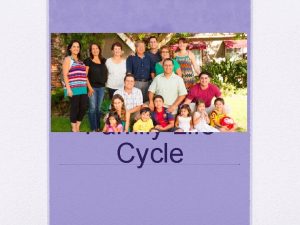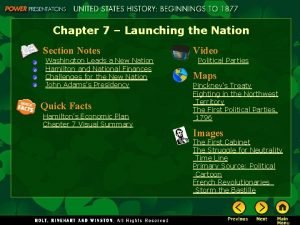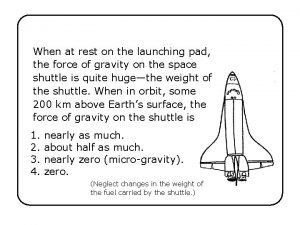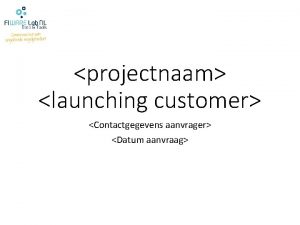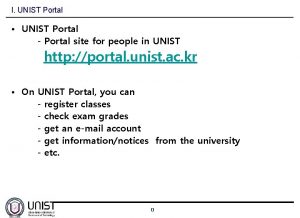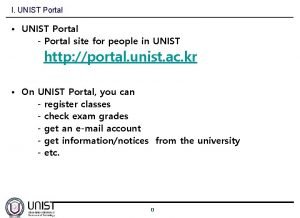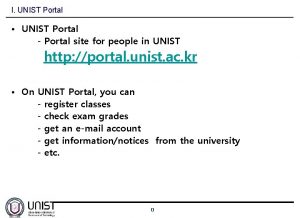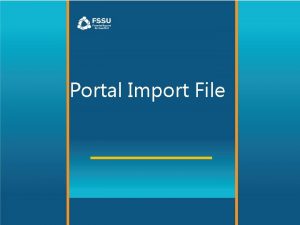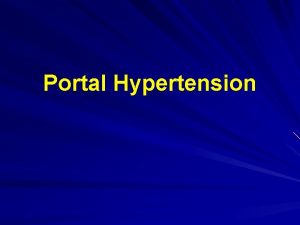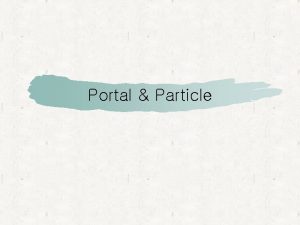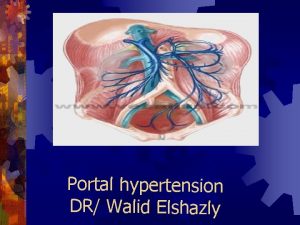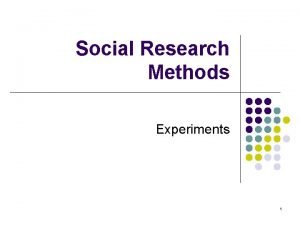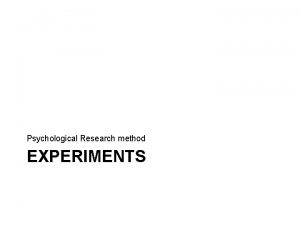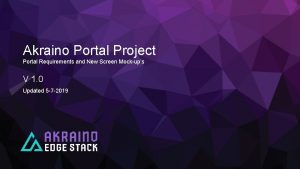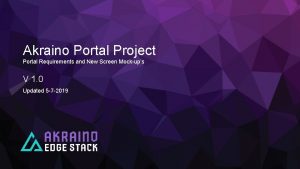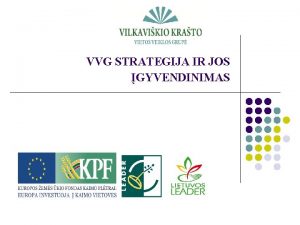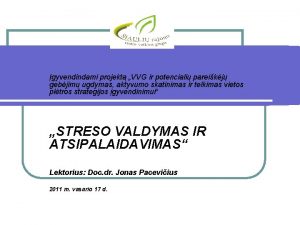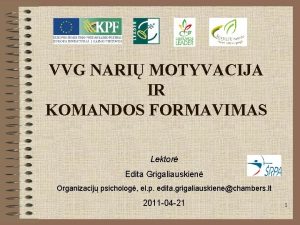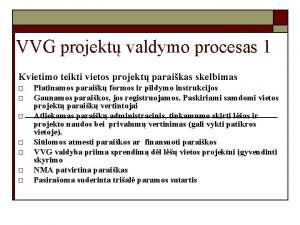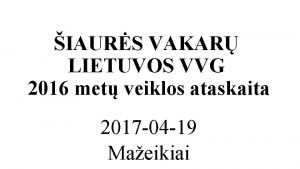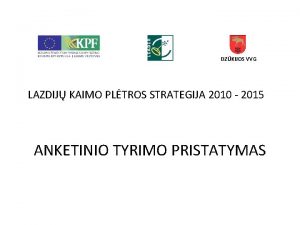Launching the new VVG portal e Research experiments




























- Slides: 28

Launching the new VVG portal: e. Research experiments in data democracy Peter Dahlhaus Andrew Macleod

July 2011 granted a Broadband Enabled Innovation Program $320 k BEIP cash + $160 k partner cash + $1. 745 M in-kind A collaboration of 17 partner organisations Soft launch June 2012 An interoperative spatial information portal that federates groundwater data from disparate sources. Primarily for research and investigation. Non-government portal (unique? ).

www. vvg. org. au Federates around 80 groundwater data sets from 8 custodians. Some data are realtime, some are scheduled updates, some are linked data Depth to watertable

Bore parameters Information on over 400, 000 bores accessed from the source databases

Predicted depth to watertable and groundwater quality

3 d model of aquifers

EPA audit sites, GQRUZ sites and priority sites

Primary impact The VVG portal is frequently used by a wide crosssection of society Analytics

Practice impact The portal has changed the way people find groundwater data

Sector impact ) s s e c c a The provision of multiple groundwater datasets from disparate n e p o ( 16 sources within a single internet portal has 2 changed practices in the 0 h c r Victorian groundwater industry. /2 Ma 8 1 : s c i t a m r o f n i ro d y H f o l a n r u o J

www. cerdi. edu. au The VVG has spawned around 30 spatial data portals


Data interoperability Full interoperability requires adopting common: systems - communication protocols (e. g. for web services); syntax - representation language (e. g. Extensible Markup Language (XML), Java. Script Object Notation (JSON) or others); structure - data schema (e. g. GWML 1); semantics - content vocabulary (e. g. for water quality parameters); and pragmatics - best practices in the collection and use of the data

Open Geospatial Consortium: an international consortium of companies, government agencies and universities that develops publically available international spatial data standards for data interoperability. OGC(R) standards are technical documents that detail interfaces or encodings used by software developers. Groundwater Interoperability Experiment 2 (GW 2 IE) http: //external. opengis. org/twiki_public/Hydrology. DWG/Groundwater. Interoperability. Experiment 2

Aims: GWML 2 interoperability experiment • Develop an international groundwater information model • Develop a GML application schema, for groundwater data • Harmonize existing models (GWML, INSPIRE) Regions: North America Europe Australasia 5 years, 57 meetings

GWML 2 interoperability experiment Use Cases Agreed entities Conceptual Schema Logical Schema Physical Schema

Entities: Hydrogeo. Units, Voids, Fluid Bodies GW_Basin GW_Management. Area GW_Monitoring. Site Groundwater basin Bedrock aquifer Fractured rock aquifer Uncon fined a quifer Aqui fer Conf ining bed Con fined aqui fer Well Con Groundwater filling the pore space GW_Aquifer. Unit ui _Aq finin fer Observation well gb GW ed d ifer g. Be u n i q n _A nfi GW W_Co ed G g. B n r i in ife qu Conf A _ _ GW GW Particulate rock aquifer GW_Fluid. Body GW_Hydrogeo. Void Solutes, suspended solids, and organisms in groundwater GW_Chemical. Constituent GW_Material. Constituent GW_Biologic. Constituent GW_Aquifer. System Wellfield

Entities: Flow, Well GW_Recharge Pumping well GW_Discharge GW_Spring GW_Discharge GW_Well GW_Divide GW_Body. Surface Land surface Groundwater basin Vadose zone Unconfined aquifer Watertable Confining bed w o Ground water fl Confined aquifer Bedrock aquifer GW_Intra. Flow GW_Confining. Bed GW _Fl ow GW_Aquifer GW_Inter. Flow GW_Flow. System

simplified UML representation of the GWML 2 conceptual schema. Colours denote distinct packages within the logical schema

International data interoperability standards OGC Water. ML 2: Part 4 – Ground. Water. ML 2 (GWML 2) Is maintained by a Groundwater Standards Working Group Google OGC GW SWG to find it!

So what constitutes groundwater data? Geomorphology Terrain Landscape Climate Rainfall Runoff Infiltration Recharge Bore construction Extraction Water levels Storage Geology Lithology Stratigraphy Hydrostratigraphy Aquifers Aquifer parameters Flow systems Age (dating) Chemistry Geophysics Contamination Environmental History Land use Soils Discharge Salinity Springs GDEs Baseflow River flows Lake levels Management Beneficial uses Licences Hydrobiology Phreatophytes Stygofauna Microbiology Risk

But what about the qualitative data? Data often overlooked by scientists (hydrogeologists), but it can be critically important. Examples include observations about landscape features, soil colours, vegetation types, seeps, springs, wetland ecosystems, and anecdotal information from long-term occupiers of the land. Redoximorphic features in saprolite, Dundas Tableland, Vic

Original data sources are valuable Archival boring records are particularly important sources of information.

Data volumes Trends in data custodianship 1970 1990 2010 2020 Does not include social data

DATA REGIMES Data Dictatorship: Data is controlled and its use restricted. Distribution of data is based on perceived necessity. Data Aristocracy: Data analysts and scientists are required to provide meaning, and they have the power. Data Anarchy: Users feel underserved and create their own datasets from available sources. Data sharing is ad-hoc. Data Democracy: Everybody gets timey and equitable access to data. Users are empowered and they often own some of the data.

Antle, J. M. , Basso, B. , Conant, R. T. , Godfray, H. C. J. , Jones, J. W. , Herrero, M. , Howitt, R. E. , Keating, B. A. , Munoz-Carpena, R. , Rosenzweig, C. , Tittonell, P. and Wheeler, T. R. (2017). Towards a new generation of agricultural system data, models and knowledge products: Design and improvement. Agricultural Systems. DOI: http: //dx. doi. org/10. 1016/j. agsy. 2016. 10. 002.

Data Democracy can interoperably federate: ü Public and private data ü Big data, sensors, internet of things ü Legacy data ü Crowdsourced data To answer the frequently asked hydrogeological questions To dynamically generate conceptual and predictive models To make new discoveries and avoid repeating past mistakes To reduce time wasted in litigious conflicts

beta. vvg. org. au
 Entrepreneurship successfully launching new ventures
Entrepreneurship successfully launching new ventures Launching the new republic
Launching the new republic Chapter 10 launching the new ship of state
Chapter 10 launching the new ship of state An exciseman cartoon
An exciseman cartoon Chapter 2 section 4 launching the new nation
Chapter 2 section 4 launching the new nation Chapter 9 launching a new republic
Chapter 9 launching a new republic Tahapan keluarga
Tahapan keluarga Tony and sue are launching yard darts
Tony and sue are launching yard darts Contoh backgrounders public relations
Contoh backgrounders public relations Mst physics 1135
Mst physics 1135 Launching the nation section 1 answers
Launching the nation section 1 answers Entrepreneurial competencies discipline
Entrepreneurial competencies discipline Bga safe winch launching
Bga safe winch launching Coupling stage family life cycle
Coupling stage family life cycle Launching the nation section 1 answers
Launching the nation section 1 answers If the sun suddenly collapsed to become a black hole
If the sun suddenly collapsed to become a black hole Launching customer
Launching customer Hát kết hợp bộ gõ cơ thể
Hát kết hợp bộ gõ cơ thể Lp html
Lp html Bổ thể
Bổ thể Tỉ lệ cơ thể trẻ em
Tỉ lệ cơ thể trẻ em Gấu đi như thế nào
Gấu đi như thế nào Chụp tư thế worms-breton
Chụp tư thế worms-breton Alleluia hat len nguoi oi
Alleluia hat len nguoi oi Các môn thể thao bắt đầu bằng tiếng đua
Các môn thể thao bắt đầu bằng tiếng đua Thế nào là hệ số cao nhất
Thế nào là hệ số cao nhất Các châu lục và đại dương trên thế giới
Các châu lục và đại dương trên thế giới Công của trọng lực
Công của trọng lực Trời xanh đây là của chúng ta thể thơ
Trời xanh đây là của chúng ta thể thơ
